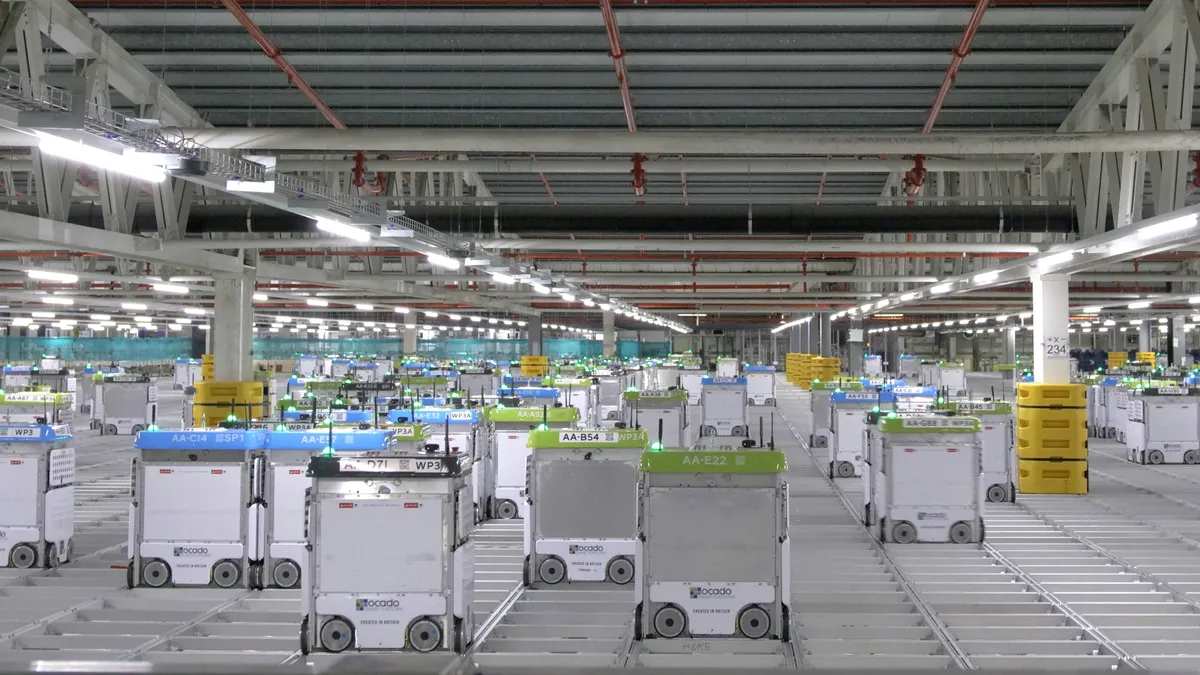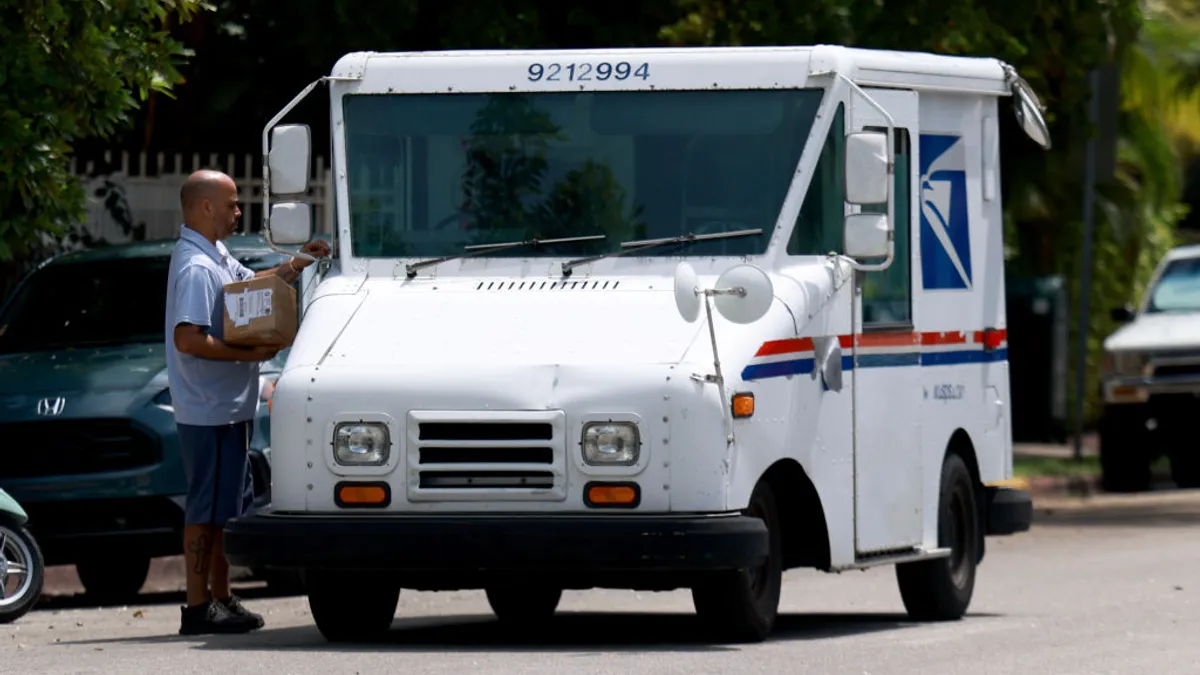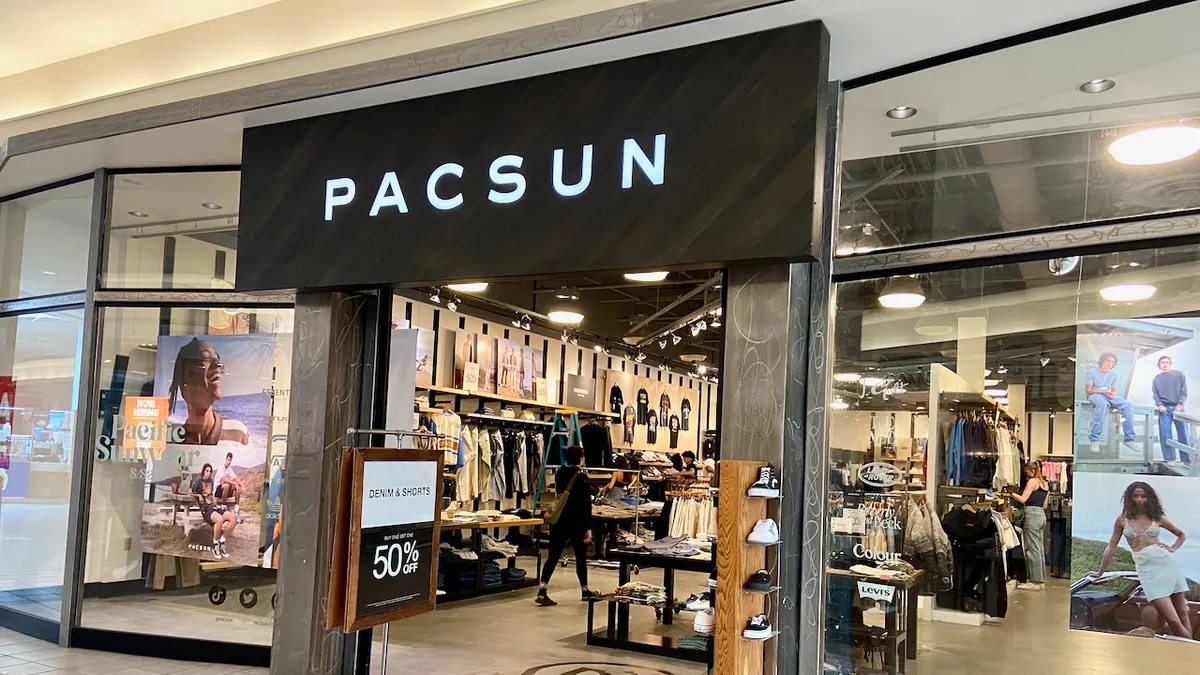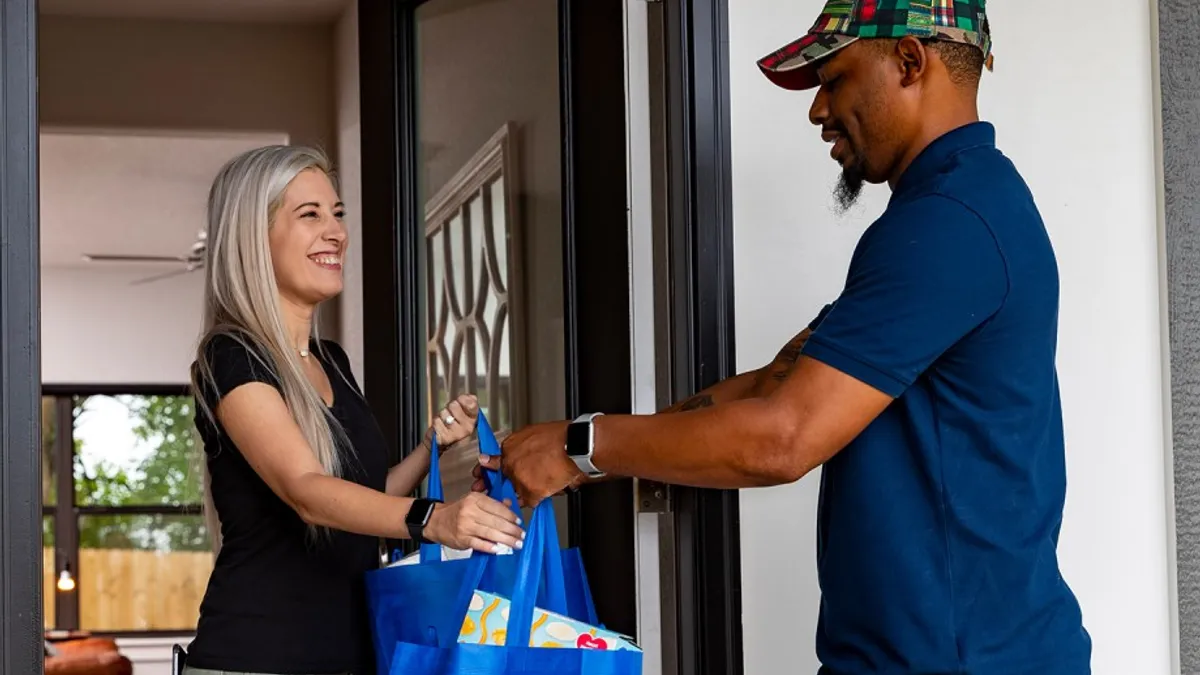LAS VEGAS, Nev. — Though doubters still exist, e-grocery is growing and maturing. Online grocery sales grew 15% so far this year according to an analysis from Brick Meets Click. And multi-million dollar investments from Walmart, Target, Kroger and others show a bullish attitude from the traditional retail category’s top players.
Delivery is an essential part of the e-grocery equation, and many new tech providers and carriers are entering the space to ferry groceries to shoppers’ homes. Efficient delivery is important, but equally, if not more important, is an efficient process before the product leaves the grocer.
In the order building process — the crucial initial leg of order fulfillment — the grocery store has been a staple of e-grocery’s early days. (There are a few store-less exceptions like New York’s Fresh Direct.) But as players move from the initial phase of building an online grocery program and simply getting it to perform, into the next phase of chasing profitability and customer retention, even retailers with vast store networks are moving away from the store to fulfill orders — both for pick-up and delivery.
Kroger and Ocado bank on robotics
Kroger has made it very clear that e-grocery fulfillment centers are the future for its delivery service. Partnering with British grocery delivery firm turned U.S. tech provider, Ocado, the grocer believes robotic fulfillment tech will "take cost out of the system" as Ocado SVP of North America David Hardiman-Evans said at GroceryShop this week. Kroger recently announced its fifth Ocado warehouse will open in Texas in a few years and the robotic warehouse fulfillment model will even allow the grocer to sell online in states where the company has no physical stores, like Florida.
Robotic picking is attractive because of the resulting labor reductions. Not only is picking an essential part of achieving delivery speed expectations, but it is also an expensive part of the fulfillment process. Deliv CEO Daphne Carmeli said she has heard figures as high as $12 per order for grocery picking cost. And few programs charge online grocery fees large enough to offset these fulfillment costs.
Industry experts at GroceryShop said consumer concerns around picking their own produce and meat remains a major barrier to getting e-grocery out of the single digits in terms of total grocery sales (currently at 3%) and so quality picking is a high stakes game.
Kroger’s Ocado-fueled model banks on buyers bringing in only the best product so that robots need not discern between items of varying quality.
Walmart moves toward a hybrid model
Walmart is investing massive amounts in its omnichannel grocery strategy, which, though the orders are still largely picked in-store, is not as simple as receiving an order fulfilled by the consumer’s closest Walmart location.
"In order to make the best of our assets there are certain locations where customers can pull up to get that pickup order, but none of the groceries in that order came from the store they’re sitting outside of. Not one," said Walmart VP of Digital Operations Tom Ward. "Because what we do is we pick a hub and we say 'we’re going to sweat this asset really hard and we’re going to pick all of our orders from this store.'"

At GroceryShop, Ward emphasized the training and skill of the company’s e-grocery shoppers — the company has 45,000 nationwide, he said. These workers are trained to be subject matter experts, meaning they are specialists in picking fish or meat or produce. It follows that expanding this model would lend itself to a more streamlined picking process. Larger Walmart stores, full of these trained shoppers will increasingly feed pickup at other stores in a hub and spoke model for picking and packing of grocery orders.
The idea is demonstrated by Walmart’s early adoption of autonomous delivery vans, which currently shuttle grocery orders ready for pick up between a Walmart grocery pickup location and a Walmart Neighborhood Market in Bentonville, Arkansas.
"This is letting us take more and more complexity out of the model," said Ward.
This hybrid strategy may also allow Walmart to focus efforts on optimizing only some store or e-grocery order picking operations while offering pickup at nearly all locations and delivery from many.
Who’s sticking with stores?
Instacart, the ultimate enabler for store-fulfilled e-grocery orders is naturally still betting on store fulfillment.
Nilam Ganenthiran, chief business officer at Instacart, told GroceryShop attendees that Instacart Enterprise is a growing service wherein grocers can create their own branded e-commerce store using Instacart on the backend.
"We still believe the future is the existing store footprint," said Ganethiran. Insatacart continues to bet on economies of scale to bring efficiency to delivery and labor.

Store-driven and non-store fulfilled e-grocery models both have their place in the future of e-grocery, depending on the size of the retailer, Gary Hawkins, the founder and CEO of the Center for Advancing Retail and Technology told GroceryShop
"I don’t think there’s going to be any one solution fits all here," Hawkins said. "It’s going to be a mix of solutions that are appropriate for different retailers. Ocado may work great for Kroger but not for the regional guys and certainly not for the independent grocer."
The diverging strategies so far, have clear cut risks and benefits. Dedicated e-grocery fulfillment facilities require much more up-front investment, but promise more efficiency and likely, more consistent product quality and availability. Store-fulfilled strategies have very little overhead, but largely leave shoppers at the mercy of store operations, which naturally do not prioritize online sales at current low levels of total revenue. Stores are also inherently close to where people live, creating logistics efficiencies in ways central warehouses may not, depending on the delivery model.
No two grocers are likely to dial-in all of these factors in the same way, so direct comparisons are difficult. However, growth in out-of-store order fulfillment marks a level of investment that proves major national players are betting on e-grocery by building capacity ahead of demand. Their divergent strategies may offer a clearer indication of whether consumers will reward those bets or not.























